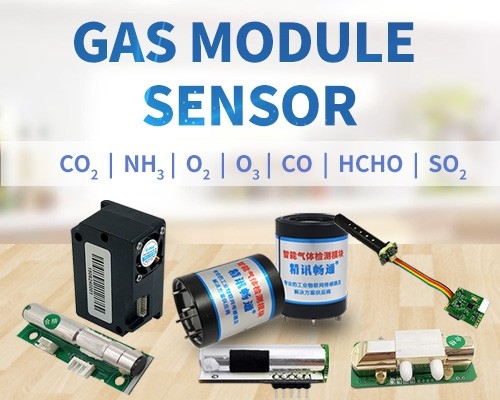In an era where industrial growth and technological advancements coexist, safety has emerged as a paramount concern for both workers and regulatory bodies. The recent incident in an industrial zone, where advanced gas detectors played a pivotal role in alerting authorities to a hazardous leak, underscores the importance of such technology in preventing catastrophic accidents. This article delves into the specifics of the incident, the technology behind the detectors, its impact on industrial safety, and the future implications for such zones worldwide.

The Incident: A Close Call Averted
On a seemingly ordinary day in an industrial zone known for its chemical plants and manufacturing facilities, a routine inspection took an unexpected turn. At around 3 PM, an advanced gas detector installed in one of the plants emitted an urgent alarm, indicating the presence of toxic gases exceeding safe levels. The detector, equipped with state-of-the-art sensors and real-time monitoring capabilities, pinpointed the leak’s location within seconds, enabling swift action.
The plant’s emergency response team was immediately notified, followed by local fire and rescue services. Evacuation procedures were swiftly initiated, ensuring that workers in the vicinity were safely evacuated to designated assembly points. Simultaneously, control rooms across the zone were flooded with data from the detector, providing crucial insights into the leak’s nature, concentration, and potential spread.
The hazardous material identified was chlorine, a highly toxic gas used in various industrial processes but known for its severe health hazards if inhaled or exposed to in high concentrations. Thanks to the rapid response facilitated by the gas detector, no injuries were reported, and the leak was contained within an hour.
The Technology Behind Advanced Gas Detectors
The incident highlighted the sophistication of modern gas detection technology. Traditional detectors rely on electrochemical sensors or catalytic beads to detect specific gases. However, advanced gas detectors have evolved beyond these basic principles, incorporating cutting-edge technologies such as:
- Photoionization Detectors (PIDs): These detectors use ultraviolet light to ionize gas molecules, measuring the resulting current to identify and quantify volatile organic compounds (VOCs).
- Non-Dispersive Infrared (NDIR) Sensors: These sensors detect gases based on their absorption of infrared radiation at specific wavelengths. Commonly used for detecting carbon dioxide (CO2), methane (CH4), and other infrared-active gases.
- Metal Oxide Semiconductor (MOS) Sensors: These are chemical resistors whose conductivity changes in the presence of certain gases. While less specific than other technologies, they are cost-effective and widely used in portable detectors.
- Laser-Based Detection: Utilizing tunable diode laser absorption spectroscopy (TDLAS), these detectors emit a narrow-band laser beam tuned to a specific gas absorption line. Any absorption indicates the presence of the target gas, offering high accuracy and selectivity.
The detector involved in the industrial zone incident employed a combination of PID and NDIR technologies, providing a broad spectrum of detection capabilities. Its real-time monitoring system integrated with IoT technology allowed for seamless data transmission and analysis, enabling a quick and informed response.
Impact on Industrial Safety
The incident serves as a testament to the transformative impact of advanced gas detectors on industrial safety. Historically, gas leaks have led to severe consequences, including explosions, fires, and long-term health impacts for workers. By providing early warnings and precise data, these detectors enable:
Swift Evacuation: Time is of the essence in gas leak situations. Early detection allows for immediate evacuation, minimizing the risk of exposure.
Controlled Shutdown: With precise leak location and concentration data, operators can initiate controlled shutdowns of affected equipment, preventing further leakage.
Emergency Response Optimization: Real-time data shared with emergency services enables them to plan and execute effective response strategies, reducing the overall incident footprint.
Regulatory Compliance: Many industries are governed by strict safety regulations. Advanced detectors ensure ongoing compliance, providing detailed logs and reports for audits and inspections.
Future Implications
The successful deployment of advanced gas detectors in the industrial zone incident paves the way for broader adoption and further technological advancements. As industries continue to evolve, the integration of AI and machine learning algorithms into gas detection systems could revolutionize safety further. For instance, predictive analytics could identify potential leak sources before they become critical, while automated systems could initiate pre-emptive measures without human intervention.
Moreover, the incident underscores the importance of cross-industry collaboration in safety innovation. Sharing best practices, technology, and lessons learned can amplify the impact of advanced gas detectors, fostering a culture of continuous improvement in industrial safety.
Conclusion
The recent hazardous leak in an industrial zone, successfully mitigated thanks to advanced gas detectors, stands as a testament to the critical role technology plays in ensuring workplace safety. By evolving from traditional detection methods to sophisticated, real-time monitoring systems, industries can significantly reduce the risks associated with hazardous materials. As we look towards the future, ongoing innovation and collaboration will undoubtedly lead to safer work environments, protecting workers, the community, and the environment from the perils of industrial accidents. The journey towards zero-incident industries is underway, and advanced gas detectors are at the forefront, guiding us towards a safer tomorrow.